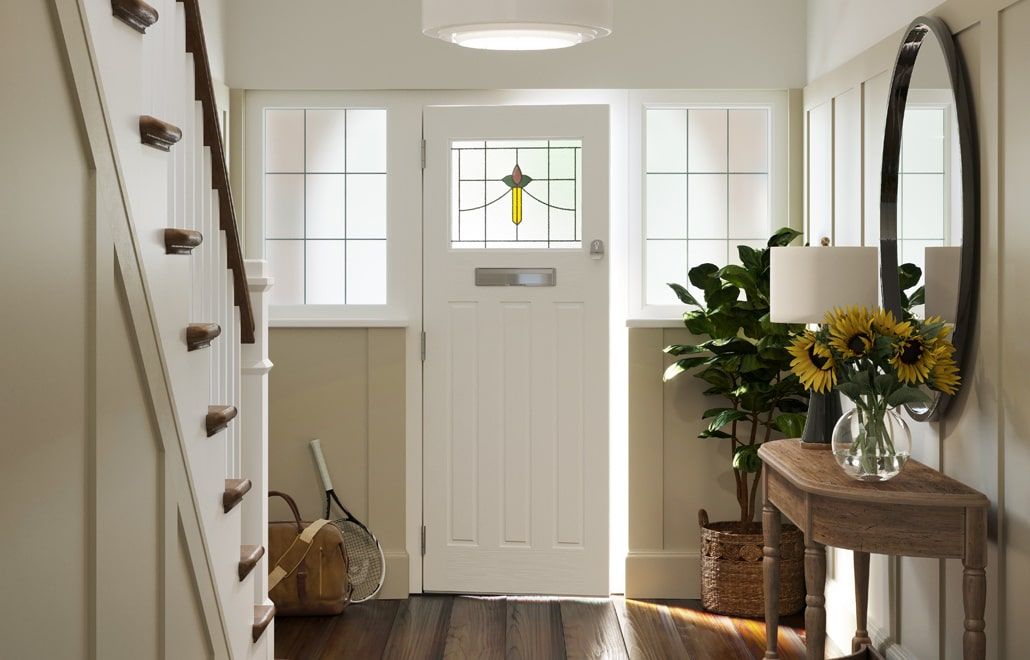
Doors Through the Decades: The Roaring Twenties
The time has finally come for us to explore one of our most favourite periods in home design: the 1920s. More broadly, it’s the whole Art Deco period – but the 1920s is when things really started to get exciting. We love transforming homes from this era – with their broad architectural styles and quirks, it’s a period we never ever tire of. So, what is it that influenced the iconic Art Deco style? How did door design evolve from the 1920s and into the 1930s? And, most importantly, what should you be taking into account if you’re looking to stay faithful to your home’s heritage? Throw on your flapper dress, grab a Tom Collins and let’s begin..!
Design Influences: A Blend of Styles
The 1920s and 1930s were dynamic decades, brimming with architectural evolution and diverse design influences. The Roaring Twenties brought us the Art Deco movement, a style that celebrated modernity, luxury, and oozed glitz and glamour: think rich colour schemes, geometric patterns and luxurious fabrics.
The onset of The Great Depression, however, brought about a shift in design in the 1930s, with the opulence of the 1920s making way for a more back to basics approach. This style was all about understated elegance and a focus on natural materials and finishes: original wooden floors, stained glass and decorative brickwork all made an appearance during this decade.
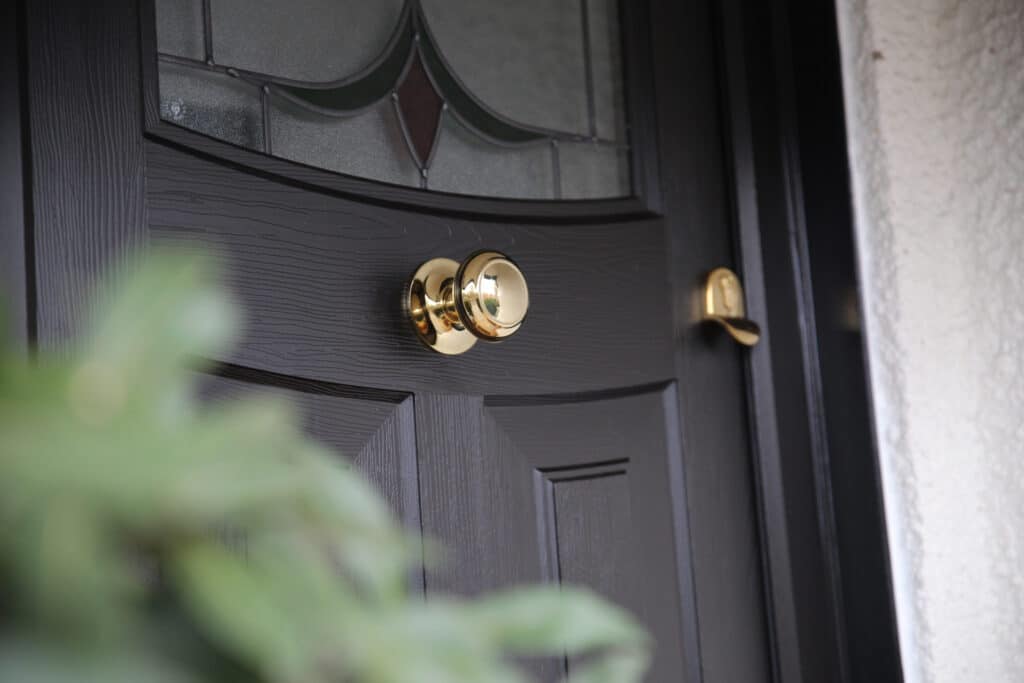
The Hallmarks of Art Deco Door Design
Art Deco was all about glamour and luxury. Front doors of the time were adorned with bold geometric patterns like chevrons, zigzags, and sunbursts. Decorative stained glass and detailed metal work were key features, and quality timber was often finished to a high gloss, reflecting the era’s emphasis on luxury and sophistication.
Moving into the 1930s, Streamline Moderne made its way from commercial architecture and into residential homes. The 1930s saw a celebration of simplicity, with clean lines and simplicity gaining favour over the ornate leanings of the twenties. Simple etched glass and smooth, chrome hardware became popular, adding a touch of elegance without being too much.


What to Consider
Whether you live in a 1920s or 1930s property or you simply love the aesthetic, there are certain features and characteristics to consider.
With colour, anything goes. Vibrant shades like canary yellow, ruby red and pistachio green reflect the optimism and glamour of the Roaring Twenties. Combining a bold colour with a colourful, patterned stained glass design will really create a striking first impression. Or you could opt to reflect the more classic, traditional style of the 1930s, sticking to elegant classics like onyx black and racing car green, or an oak-effect finish.
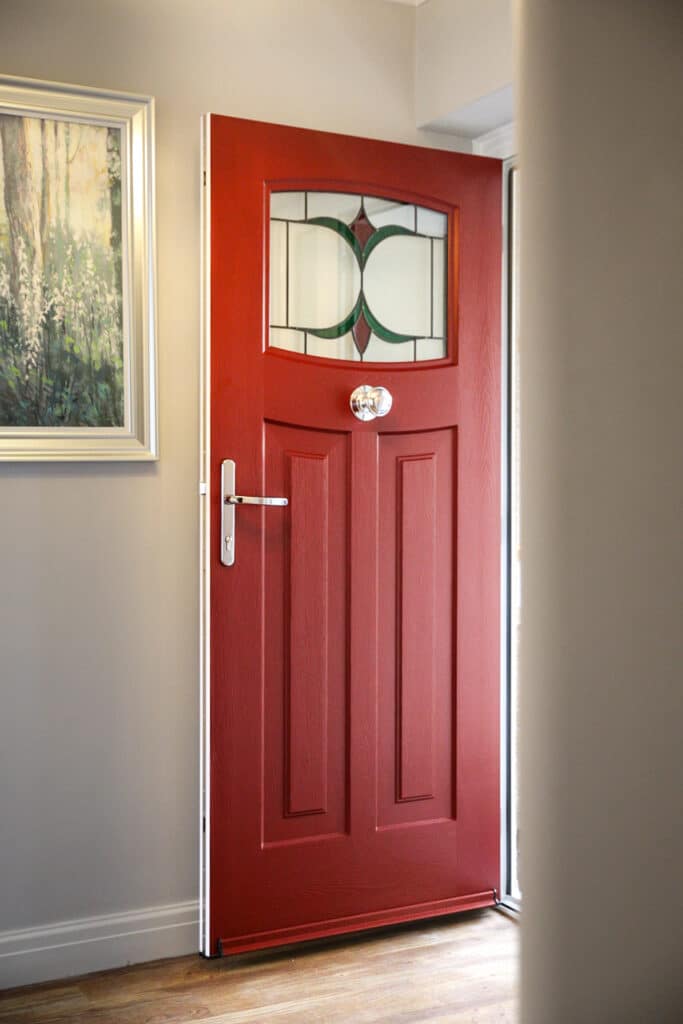
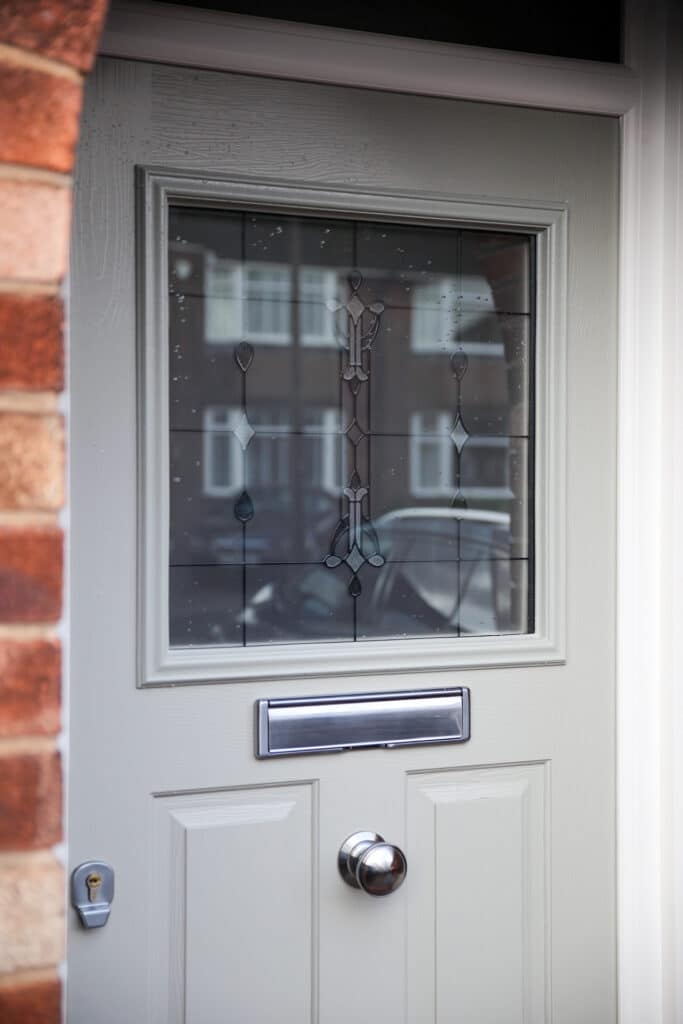
When it comes to glass designs think sleek and subtle, choosing geometric patterns featuring diamonds, circles and triangles or even a classic sunburst or fan design. Bring the colour with amber, green and blue glass to make the design really pop and contrast with your chosen door colour. For a little more detail you could turn to floral or nature-inspired motifs which would really sing with those greens and blues. Or for a more simple nod to the 1930s style you could go for etched panels, allowing the light to stream through but maintaining your privacy.
With hardware you could consider iron, brass or bronze, all characteristic of that Art Deco feel. For a contemporary Deco look choose long, vertical handles with clean lines, or you may prefer something with a curve, echoing the Streamline Moderne vibe. Brushed stainless steel or matte black would be really effective finishes here. Traditional knockers may feel a little dated so look again at clean lines and shapes that will complement your glass design. Even your house number can reference the era if you go for a classic sans-serif font.

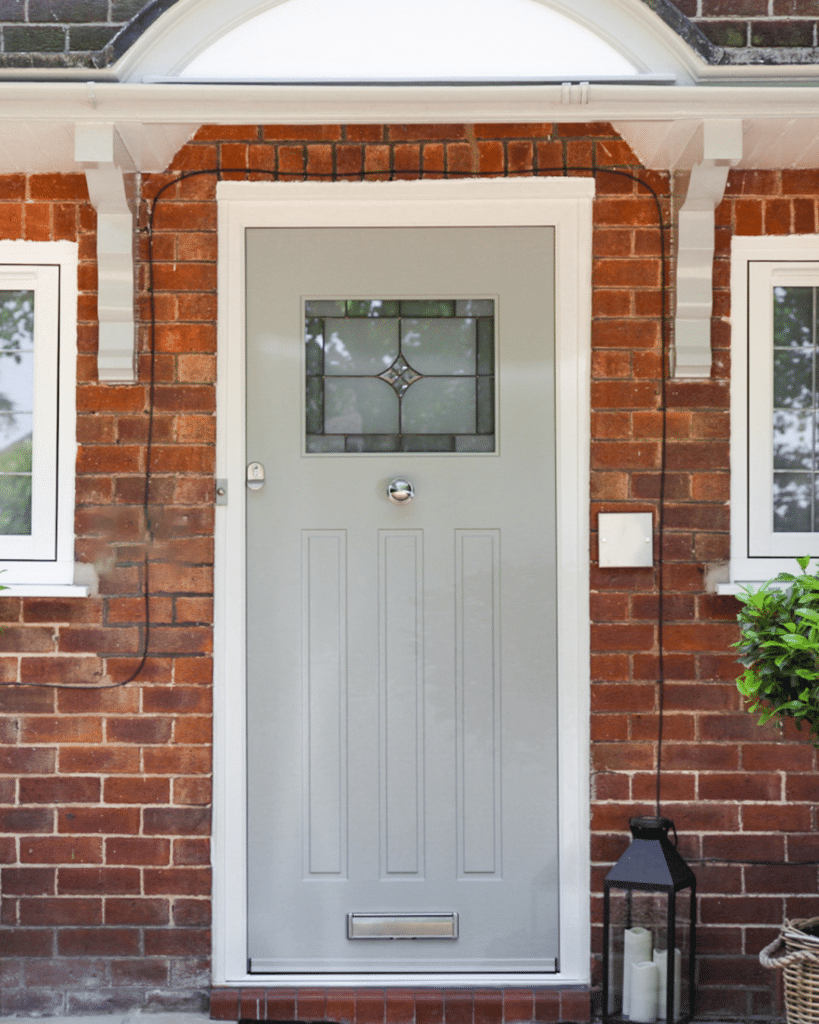
Creating that 1920s and 1930s aesthetic can be done even if your home doesn’t have its original door. With Rockdoor’s Newark, old meets new with this modern take on tradition, while one of Rockdoor’s newest doors, the Astoria, perfectly captures that 1930s feel, particularly when combined with a glass design such as Green Shimmer or Kensington. Solidor’s Stirling door features a large glazed panel, perfect for brightening up your hallway.
Conclusion
The hallmarks of Art Deco design – bold geometric patterns, luxurious materials, and a celebration of modernity – continue to captivate nearly a century after the style’s heyday. By choosing classic Art Deco motifs and styles for your front door you can pay homage to this iconic era while enjoying a thoroughly modern aesthetic. The result is an entrance that’s both timeless and current.
So whether you want to channel the glamour and decadence of The Roaring Twenties or opt for something a little more traditional, there is a style that will really add the wow factor to your home. For advice about how to choose a door for your 1920s or 1930s home, or how to bring this period style to a more contemporary setting, visit our showroom or contact our friendly team.